5 Biggest Differences Between iPhone XR and iPhone XS
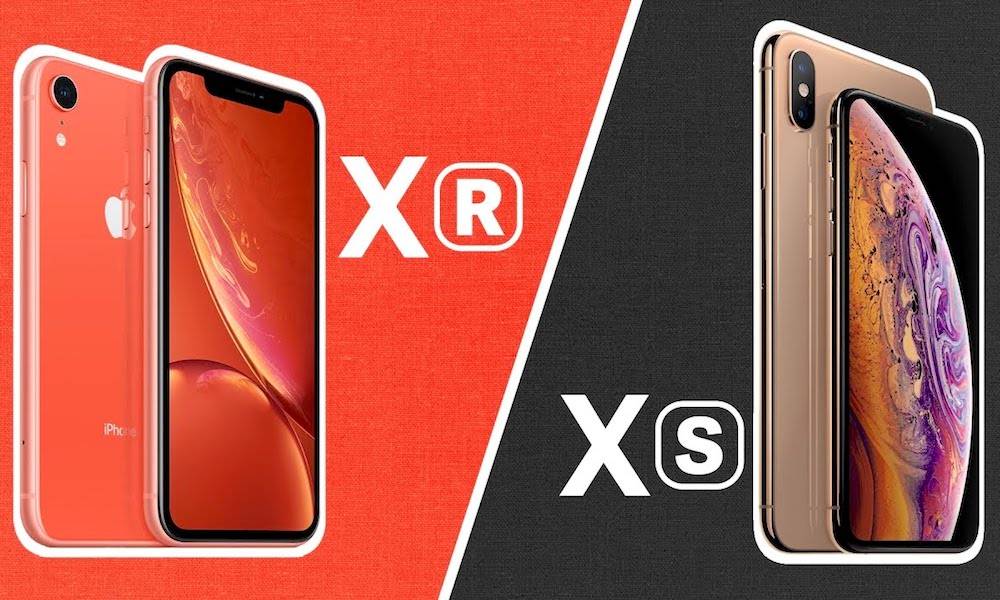 Credit: ViralBiases
Credit: ViralBiases
Apple stunned a worldwide audience of journalists and loyal fans last week when it took the wraps off its latest and most innovative iPhone lineup yet, a trio of equally beautiful, powerful and advanced new smartphones boasting similar designs, form-factors and specs — though each can be distinguished on its own accord.
For starters, the three iPhone models introduced this year can be broken-up into two sub-groups: The first, including the iPhone XS and iPhone XS Max, and the second, the iPhone XR.
And while placing the handsets side-by-side will reveal little difference other then subtle shape, size and form disparities, there are actually quite a few notable differences between them. Continue reading to learn about 5 of the biggest differences between Apple’s iPhone XS and iPhone XR.
5 Size and Construction
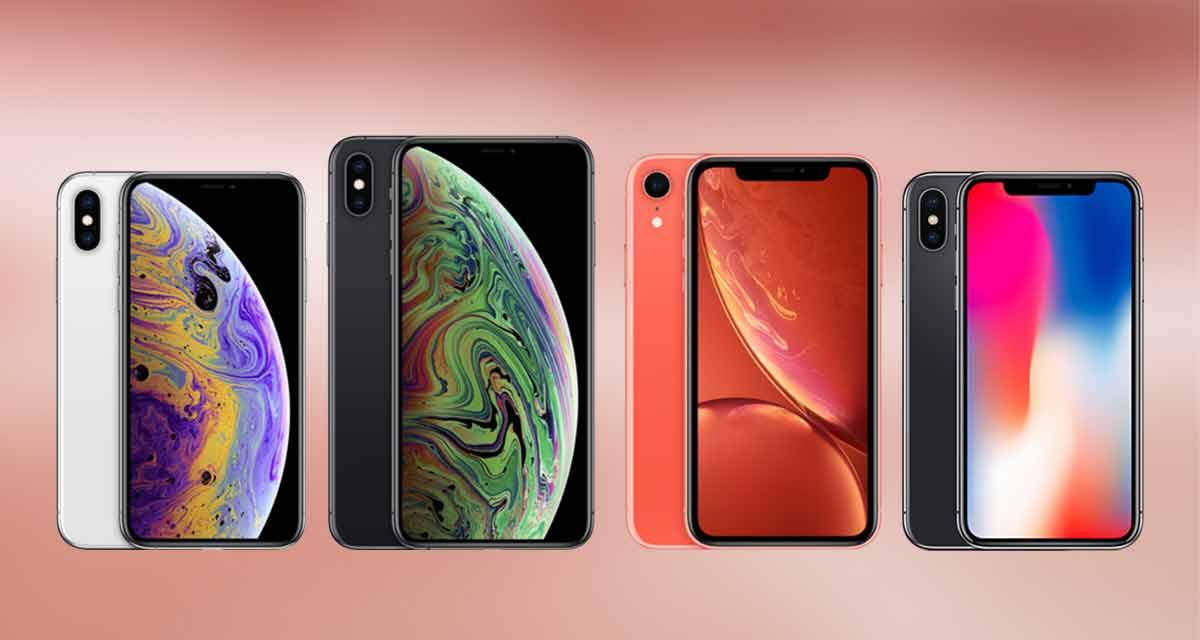
All three 2018 iPhone models flaunt similar designs, featuring edge-to-edge touchscreen displays (of varying sizes), sleek rounded corners and edges, Apple’s signature TrueDepth Camera notch and no hardware Home button unlike previous-generation models.
Despite their similarities, the iPhone XS and XS Max can be distinguished as the smallest and largest of the three handsets — boasting 5.8- and 6.5-inch touchscreen displays, respectively.
The iPhone XR falls in-between them, with its generous 6.1-inch touchscreen which is larger than the XS.
Beyond their outward facades, the iPhone XS/XS Max can be distinguished from the iPhone XR based on their build materials — with the iPhone XS/XS Max being constructed around a more premium surgical grade stainless-steel chassis, and the iPhone XR retaining the aerospace-grade 7000 series aluminum similar to the iPhone 8 and 7.
4 Display Quality
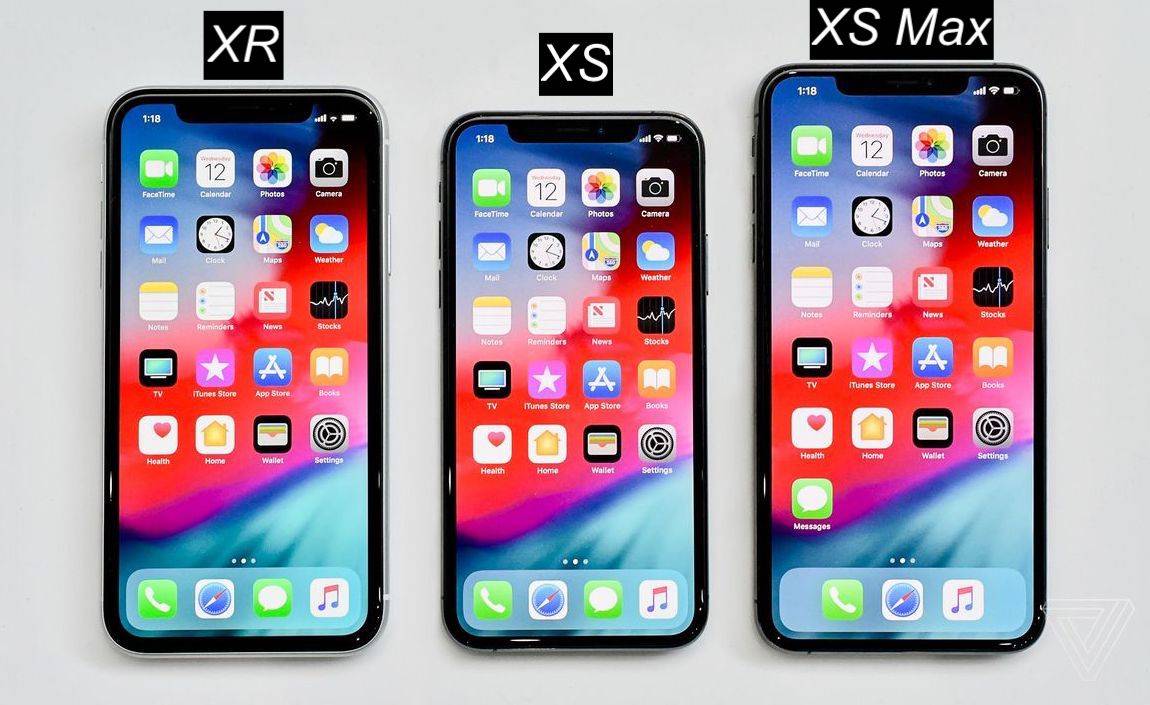
In addition to their physical size disparities, the iPhone XS, XS Max and iPhone XR also differ in their use of display technologies. The XS and XS Max both feature more premium active matrix organic light emitting diode (AMOLED) displays — dubbed Apple's Super Retina AMOLED — which clock in at 5.8- and 6.5-inches, respectively, and boast Apple’s highest pixel density on a mobile device of 458 ppi.
iPhone XR, on the other hand, boasts a more modest (albeit updated) IPS LCD panel, which Apple borrowed from LG and re-engineered in-house, calling it the first Liquid Retina Display (LRD). It clocks in right in the middle of the iPhone XS and XS Max at 6.1-inches, and touts a lower-end pixel density of 326 ppi.
3 Color Options
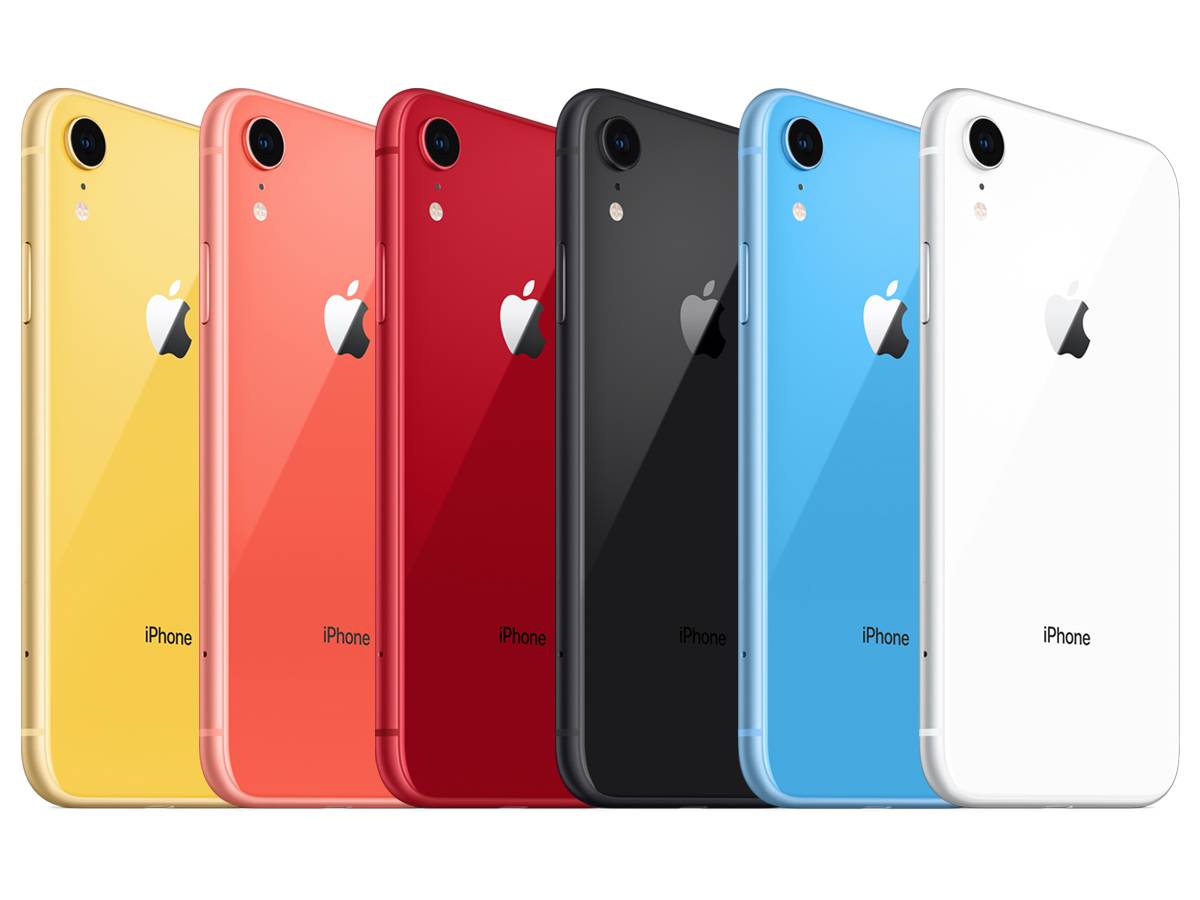
Both the iPhone XS and iPhone XR devices are available in a range of new colors this year. While you can pick up the stainless steel-clad iPhone XS or XS Max in either Silver, Space Gray, or an all-new shiny Gold color, the aluminum iPhone XR will be available in a range of six vibrant hues, including Black, White, Yellow, Blue, Coral (pink), and a special PRODUCT (RED) edition.
2 Camera Tech
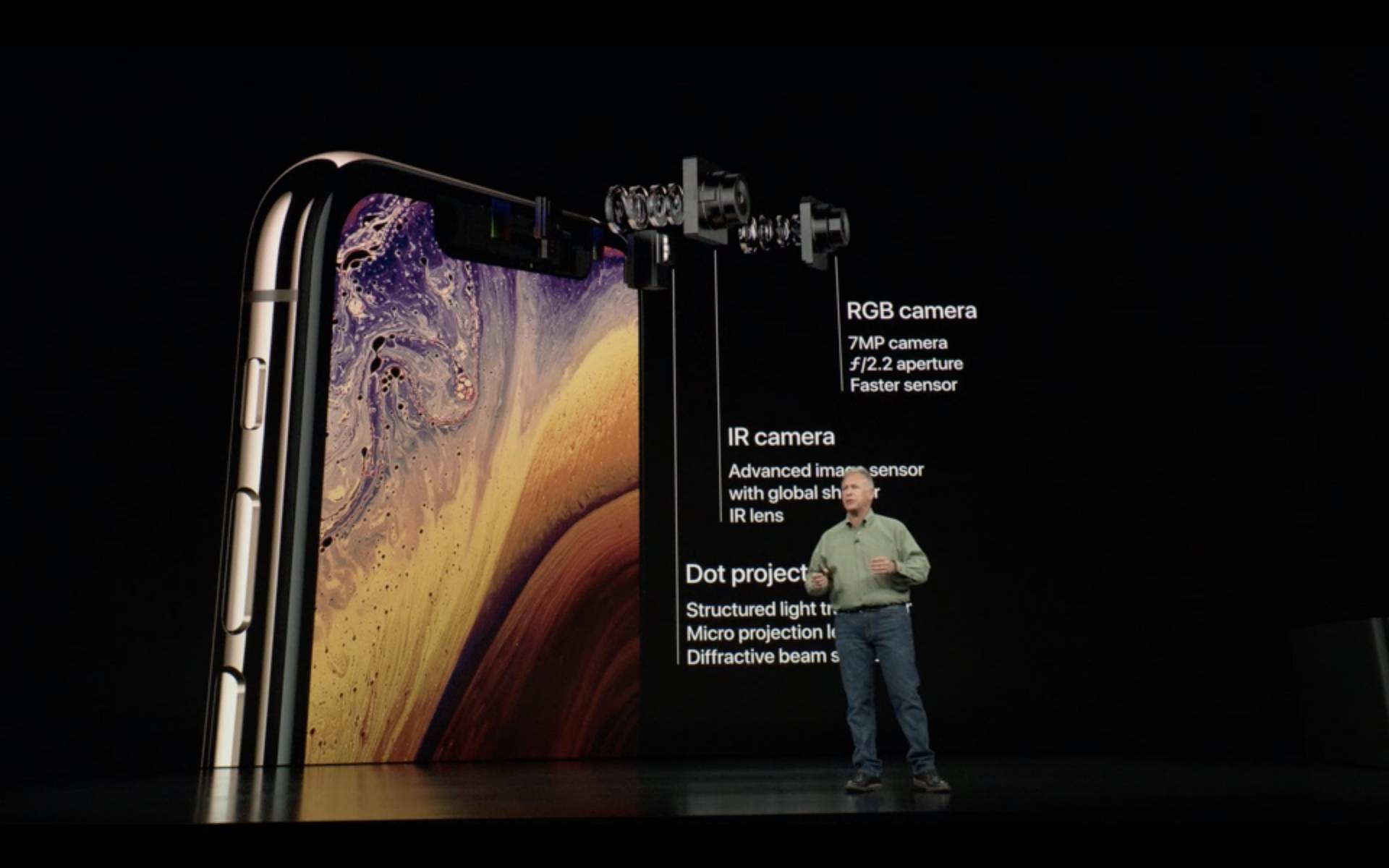
All three 2018 iPhone models come equipped with Apple’s highly-advanced TrueDepth camera systems, front-and-center, enabling next-generation 3D facial mapping with Face ID biometric security, Animoji, and the all-new Memoji features, across the board.
Flip them over, and you’ll instantly notice where the iPhone XS and XS Max differ from the iPhone XR. While the higher-end XS duo boasts an even more advanced iteration of Apple’s dual-lens camera system introduced on the iPhone 7 Plus, the iPhone XR notably retains a [slightly more advanced] version of the same single-lens camera Apple used on iPhone 8.
Granted, the iPhone XR will still be able to take advantage of Apple’s new camera settings like Depth of Field, there’s simply no argument that Cupertino's powerful dual-lens camera tech has its benefits like optical zoom.
1 Price
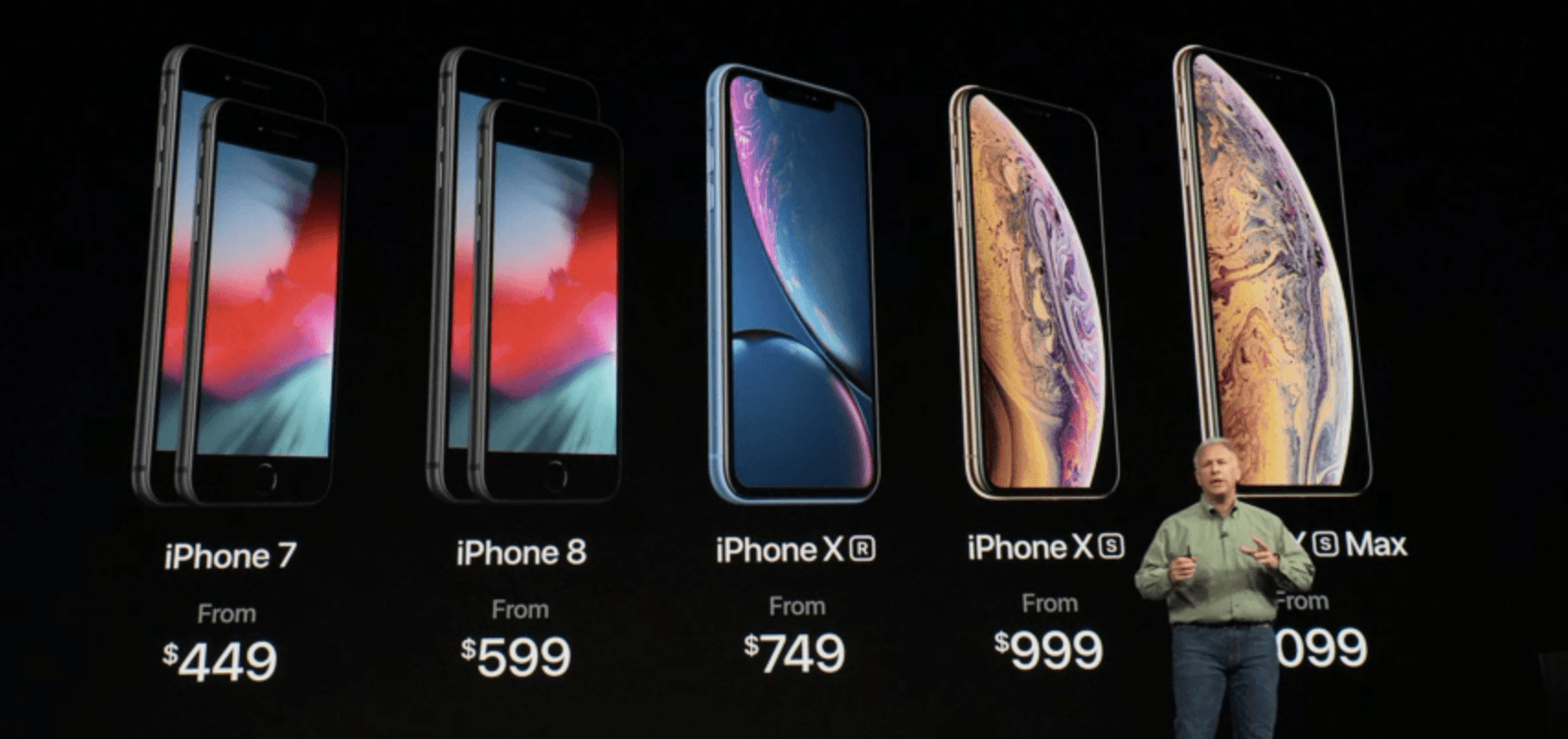
Interestingly, while they all boast some of the same specs like powerful A12 Bionic CPUs, water-resistant coatings and displays touting zippy 120 Hz refresh rates, the iPhone XS and XS Max most notably differ from the iPhone XR in their pricing.
Perhaps understandably, Apple priced its direct successor to the $999 iPhone X at the same $999 buy-in — while the super-sized, 6.5-inch iPhone XS Max goes for just $100 more at $1,099 and up, depending on storage.
Toward the end of October 2018, iPhone XR will be available to pre-order for just $749 (for a 64 GB version), with prices going up to $899 for a 256 GB variant.. That’s certainly much cheaper than even an entry-level iPhone XS — but worth noting is that Apple strategically positioned the iPhone XR as a “mid-range” offering, albeit with high-end specs, in hopes of capturing a larger slice of the smartphone market.
